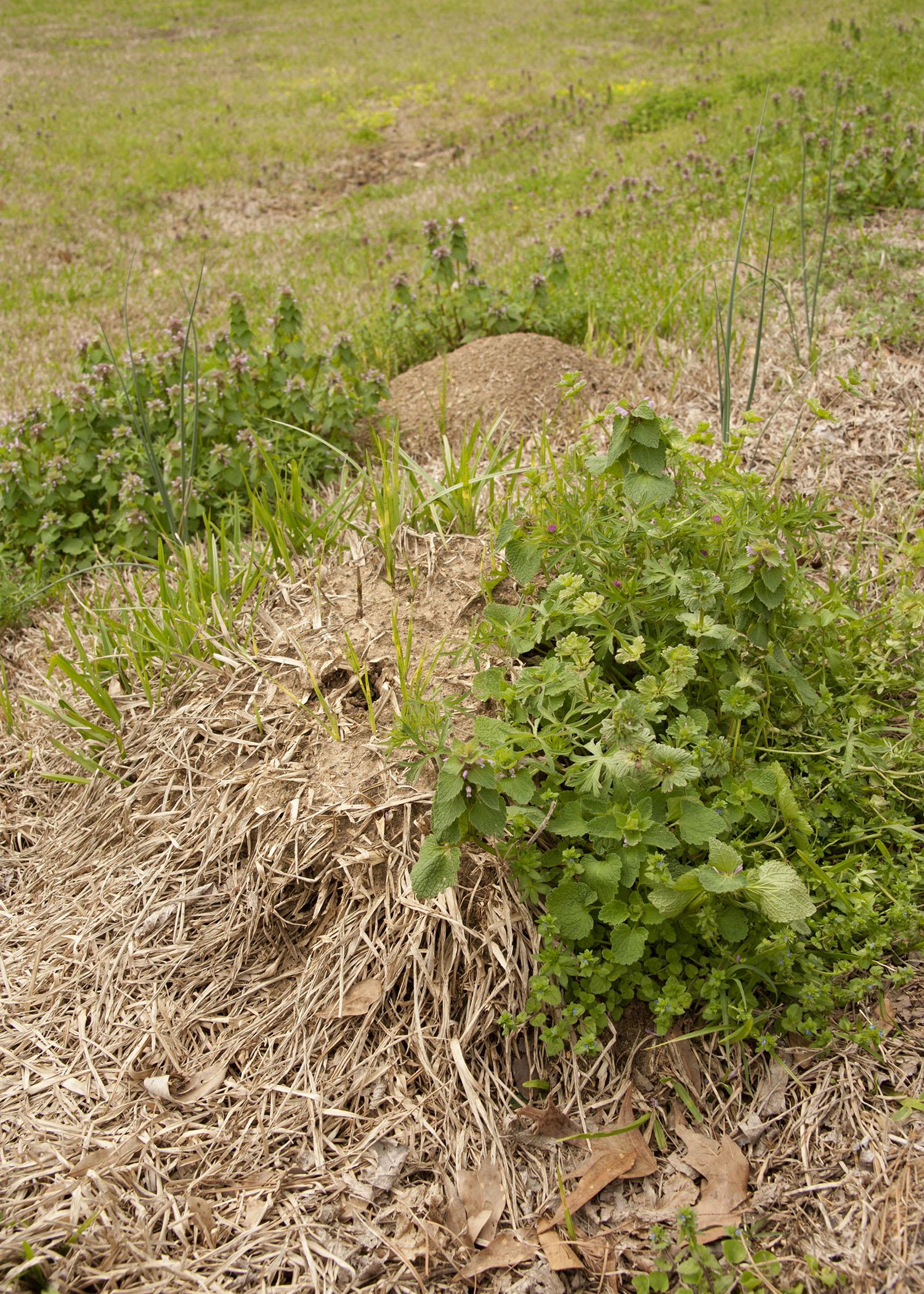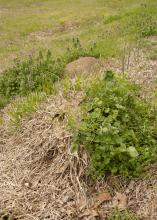Information Possibly Outdated
The information presented on this page was originally released on May 15, 2015. It may not be outdated, but please search our site for more current information. If you plan to quote or reference this information in a publication, please check with the Extension specialist or author before proceeding.
Misconceptions hurt odds of beating back fire ants
STARKVILLE, Miss. -- People have many misconceptions on how to eliminate fire ant mounds and prevent them from coming back, and these erroneous beliefs hinder efforts to keep the harmful pest from spreading.
One of the biggest mistakes is trying to use common household materials to manage fire ants, said Blake Layton, entomology specialist with the Mississippi State University Extension Service. More often than not, these “folk remedies” are ineffective or environmentally harmful, and they can cost more than commercial bait and mound treatments designed specifically to control fire ants. Typical makeshift solutions include gasoline, grits and soda.
Pouring gas on a mound does kill ants, but it also kills the grass and is a waste of money, Layton said.
“Gasoline is not legal to use in this way because it is not safe or environmentally suitable, and thus is not labeled for this use,” he said. “Also, it would be a very costly method of control.”
Fire ants supposedly explode after eating grits. However, this remedy is a tall tale, Layton said. Some people believe that drenching a mound with club soda will smother ants with carbon dioxide, but this method is also inefficient.
“Fire ants like grits just fine and will not explode after eating them,” he said. “It is possible to smother a mound with carbon dioxide, but it would take a good bit of effort. Some people will shovel mounds together so the ants will fight and kill each other. Ants from different mounds will usually fight, but this is not really an effective way to control fire ants -- far too labor intensive, even if it did work.”
Many people also believe that mowing the lawn causes fire ants to vacate an area. Disturbing a mound with the lawn mower is a good way to upset ant colonies, but it doesn’t do anything to get rid of them, Layton said.
“Ants build mounds high during spring time to get solar heating for the brood, and to stay out of water logged soils,” he said. “If the ground gets dry during the summer, the ants move the brood deeper into the cool soil. If the area is mown, the mounds seem to disappear, but the colonies are still there.”
Another common misconception is that fire ants simply crawl over from a neighbor’s yard to invade a new area. Layton said the ants reproduce and spread by swarming.
“The males and females fly up into the air, mate up there, and then the mated queens fall back to earth to start new colonies,” he said. “During this mating flight, they may travel several hundred yards to several miles, depending on wind. It is these mated females raining back down that cause new fire ant colonies, though it takes about six months to a year for new colony to grow into a large mound.”
According to Lowndes County Extension agent Reid Nevins Layton, the best approach to fire ant control is to use individual mound treatments in conjunction with broadcast applications of granular fire ant bait or broadcast treatments with residual insecticides to control all ants in an area. Nevins said two of the best times to broadcast are during the early spring and late summer.
“I get a lot of calls about fire ants,” Nevins said. “I tell my clients that the best thing to do is broadcast bait across the whole yard at least twice a year. It will take several weeks before you can knock it down if you’ve got a widespread problem, but it works.”
Layton suggested applying granular fire ant baits as broadcast treatments three or four times per year.
“This is the foundation of a good fire ant control program,” Layton said. “Use individual mound treatments to control problem mounds that escape the bait treatments. These can be dry mound treatments with acephate or liquid mound drenches with products containing contact insecticides like permethrin or carbaryl.”




